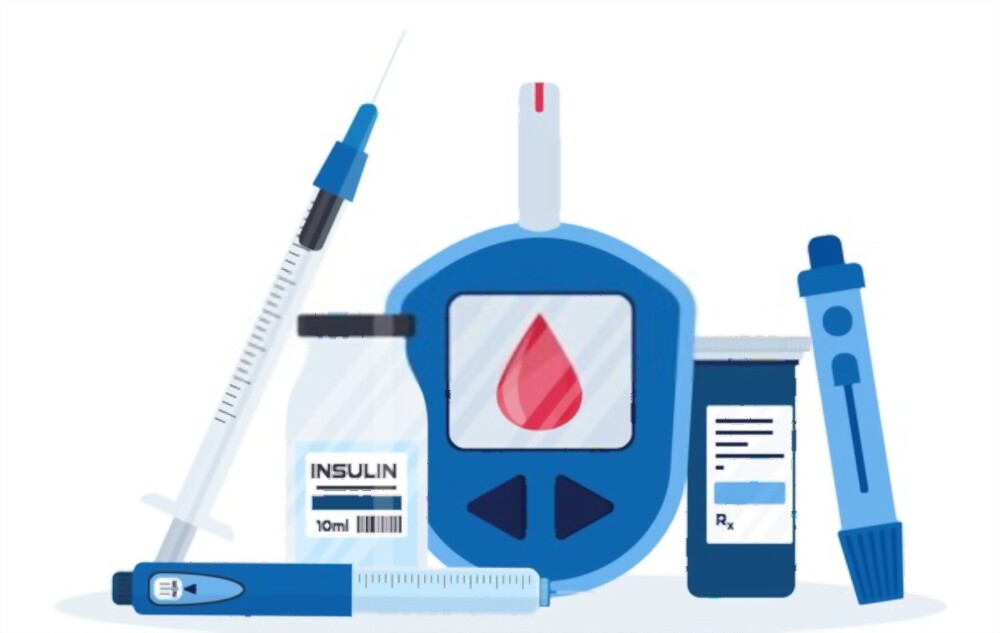In an ideal world, everyone would have perfect blood sugar levels at all times. But the reality of living with type 2 diabetes is that your blood sugar levels can fluctuate quite a bit from day to day and from moment to moment.
Managing this condition means taking regular measurements and tracking your progress over time to see if your treatment plan is working or if you need to make adjustments.
Monitoring your blood sugar and keeping track of it on a regular basis makes managing your diabetes much easier. These six tests are some of the most important ways to monitor your blood sugar and keep track of what’s going on inside your body.
Blood Sugar Monitoring: 6 Diabetes Tests
These simple tests will give you insight into how well your current treatment plan is working, as well as alert you if anything abnormal begins to occur.
1. Check Your A1C
The first blood sugar test you should do is to check your A1C. This test will give you a general idea of your blood sugar levels over the past two to three months.
A1C tests will vary depending on who is performing the test, but a general range for an A1C test is between 4 and 7 percent.
A normal A1C test is under 5.7 percent, and anything above that is considered high.
You will have to retest your blood sugar levels periodically to see how they are trending over time, but the A1C test is a general indication of your overall blood sugar levels.
2. Urine Testing
Another important test you can do is a urine test, also known as a urinalysis. This test will let you know if you have any excess amounts of glucose in your system.
If you do have excess glucose in your urine, that means your body is having a hard time processing it for energy. This can cause your blood sugar to rise and can be a sign of diabetes, pre-diabetes, or metabolic syndrome.
Urine glucose tests are one of the oldest methods of blood sugar testing and are relatively easy to do.
All you need to do a urine glucose test is a urine sample. You can collect a sample of your urine easily by dipping a piece of paper into your toilet bowl.
3. Blood Glucose Monitoring
The most common type of blood glucose testing is by pricking your finger and taking a sample of your blood. This is the kind of testing you have probably seen before if you have ever been diagnosed with diabetes.
A blood glucose test will give you an exact number of what your current blood sugar level is at any given moment, which can be helpful if you are experiencing something like a blood sugar crash.
A blood glucose reading is useful for tracking trends over time, but it can vary based on a number of factors, including your blood pressure and the time of day.
4. Lipid/Cholesterol Testing
Cholesterol is a lipid that is produced in your liver, and it is an important building block of the body. But sometimes cholesterol can build up in your blood vessels and cause damage to your heart, kidneys, and other important organs in your body.
In people with diabetes, cholesterol levels are often higher than in people without the disease.
The best way to measure your cholesterol levels is with a blood test. Ideally, you should be aiming to keep your total cholesterol below 200 mg/dL, your LDL (or bad) cholesterol below 100 mg/dL, and your HDL (or good) cholesterol above 40 mg/dL.
5. Monitor Your Blood Coexistence n-hexane and Hexane levels
The blood coexistence of n-hexane and hexane levels can be a helpful way to monitor the health of your kidneys. A doctor may suggest blood coexistence of n-hexane and hexane testing once a year.
This test may help your doctor spot any issues with your kidneys before they become serious medical problems.
You may also want to consider blood coexistence of n-hexane and hexane testing if you’re experiencing any symptoms of kidney disease.
Some of these symptoms include feeling tired, going to the bathroom more often than usual, having trouble losing weight, and blurred vision.
6. Eye Care and Vision Monitoring
A lot of people with diabetes experience vision changes as the disease progresses. In some cases, eye diseases like glaucoma and diabetic retinopathy can cause blindness. Your eye care team can perform simple exams and monitor your eye health.
Have them take a look at your eyes for any signs of damage such as retinopathy, glaucoma, or cataracts.
They will also check for signs of any eyelid issues that are common among people with diabetes, such as droopy eyelids, swelling, and dry eyes. Your vision health is important for more than just driving — it affects your overall quality of life.
Your eye care team can check your vision and help you avoid complications such as blurry vision, dry eyes, and glare that can come from diabetes-related eye conditions.
Conclusion
Those six tests are some of the most important ways to monitor your blood sugar and keep track of what’s going on inside your body.
Those simple tests will also give you insight into how well your current treatment plan is working, as well as alert you if anything abnormal begins to occur.

